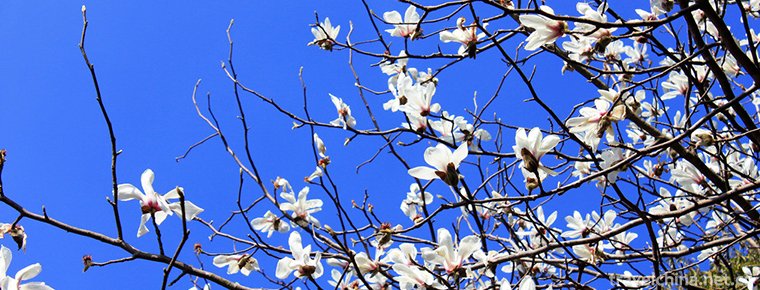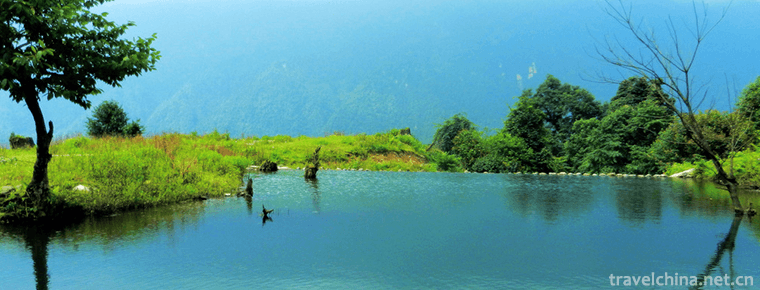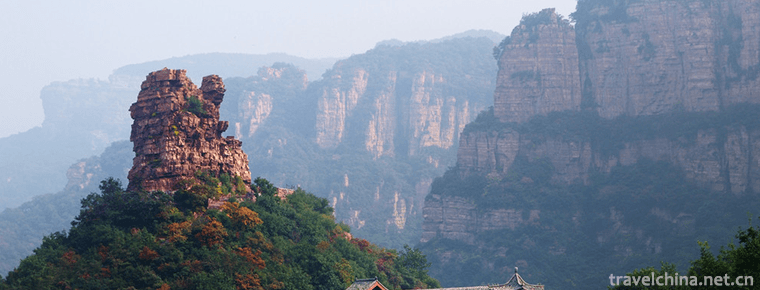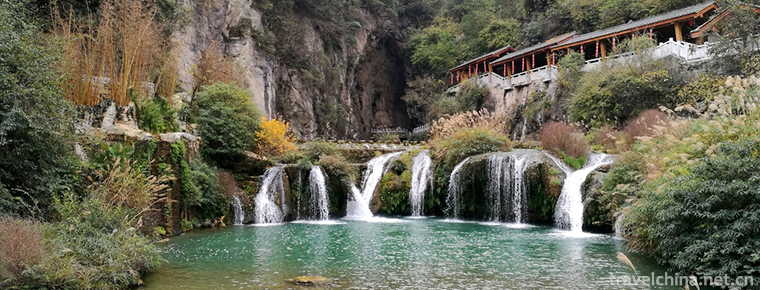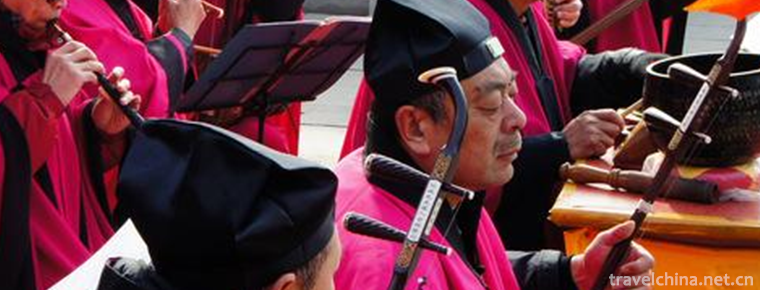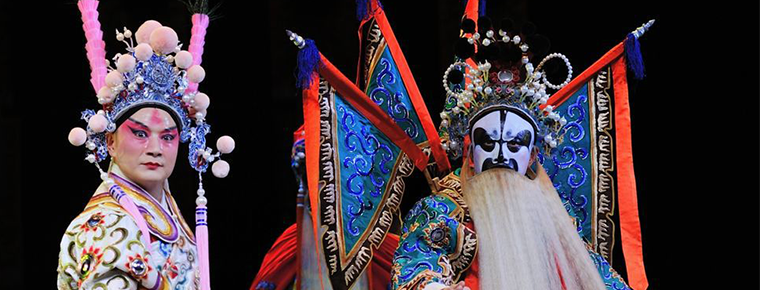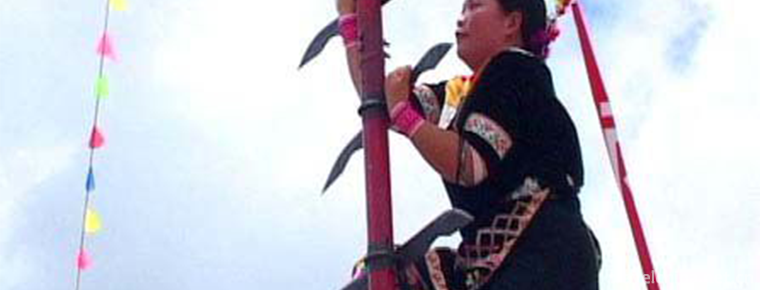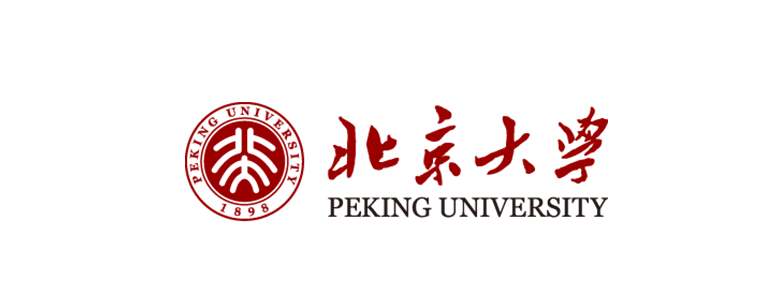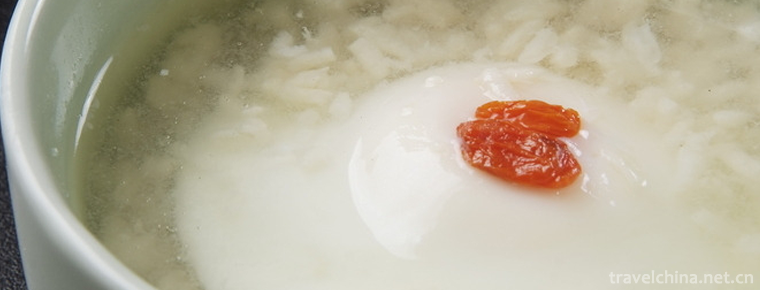Traditional flower arrangement
Traditional flower arrangement
Chinese traditional flower arrangement art has a long history, extensive and profound, is the representative of Oriental flower arrangement art. It has the characteristics of dignified and elegant modelling, poetic pictures, artistic conception of both form and spirit, and natural methods of learning.
This kind of ancient art has witnessed the rise and fall of Chinese dynasties, the development of traditional culture and art, and the changes of local conditions and customs in the past dynasties in the way of group inheritance.
On June 7, 2008, traditional flower arrangement was approved by the State Council and listed in the second batch of national intangible cultural heritage list.
historical origin
Chinese traditional flower arrangement art sprouted in the Spring and Autumn Period and the Warring States Period .
It has a history of more than 3000 years. During this period, it experienced the initial period of Han Dynasty, the development period of Southern and Northern Dynasties, the prosperity period of Sui and Tang Dynasty, the peak period of Song Dynasty, the maturity period of Yuan and Ming Dynasty, and the decline period of Qing Dynasty. This kind of ancient art has witnessed the rise and fall of Chinese dynasties, the development of traditional culture and art, and the changes of local conditions and customs in the past dynasties in the way of group inheritance. It has already become an important carrier for people to express their love for flowers and trees, to express their feelings through flowers, to borrow wisdom from flowers, and to decorate their lives.
China is the origin country of Oriental flower arranging art. Since the Sui and Tang Dynasties, Chinese traditional flower arranging was introduced into Japan, which had a great impact on the development of Japanese flower arranging. And its pursuit of line beauty, advocating nature, focusing on the creation of artistic conception beauty, concise and environmentally friendly creative techniques, has had a far-reaching impact on modern western flower arrangement.
After the late Qing Dynasty, the decline of traditional flower arranging art stagnated. After the reform and opening up, flower arranging art has been rapidly restored and developed, but traditional flower arranging is still little known. Traditional flower arranging art is facing the dilemma of inheritance .
main features
The remarkable feature of Chinese traditional flower arrangement is that there are fewer branches. When selecting materials, we attach great importance to the beautiful posture and spiritual charm of the branches. We like to use simple and elegant and noble flowers, but we don't pay attention to the full, large and bright flowers as western flower arrangement does. In modelling, elegant and natural lines are emphasized, and the composition is mostly asymmetrical and balanced. With few flowers and branches, through the contrast and cooperation of guests and hosts, virtual and real, rigid and soft, and dense, light description and elegant and vulgar, in order to embody the inherent harmony and beauty of nature and to pursue the poetic and picturesque feelings carefully .
Significant value
Historiography value
Traditional flower arranging art has witnessed the rise and fall of Chinese dynasties, the development of traditional culture and art, and the changes of local conditions and customs over the past three thousand years. It is of great historical and folklore research value.
Cultural value
It covers all nationalities, groups and times in our country. It is nourished by Confucianism, Buddhism, Taoism, poetry, books, paintings, literature and other traditional cultures and arts. It has profound artistic connotation, unique forms of expression and aesthetic interest.
artistic value
It absorbs the essence of sister art, such as gardens, bonsai, sculpture, calligraphy and painting, and perfectly integrates with flowers and containers. It is not only handicraft works, but also an artistic creation and art appreciation activity with formal beauty, ideological beauty and artistic conception. It is an elegant art of self entertainment and has unique artistic charm.
social value
It not only played an important role in the development of ancient oriental flower arranging art, but also paid attention to the creation of artistic conception, simple and environmentally friendly creative techniques, and was used for reference by western modern flower arranging.
In addition, the practical value, economic value and scientific research value of traditional flower arranging art are also very significant .
artistic characteristics
Chinese traditional flower arrangement art is different from modern western flower arrangement. Compared with modern western flower arrangement, it has unique style and distinct characteristics.
This is mainly manifested in seven aspects:
One is to pursue the natural beauty of flowers, not to change their natural posture deliberately, but to comply with the natural trend of flowers and branches, "although made by people, as if from heaven open";
The second is to pursue the beauty of flower materials and to emphasize the love of flowers.
Thirdly, we should make good use of woody flowers and shape them with lines.
Fourthly, asymmetric configuration is adopted.
Fifth, it endows the flowers with rich connotation and symbolism, and places emotions on them.
Sixthly, we should pay attention to the unification of flower materials and flower appliances, several racks, accessories and the environment of the works, so as to embody the overall harmony and beauty.
Seventh, it takes into account the unique way of flower appreciation of Chinese people, including music appreciation, wine appreciation, fragrance appreciation, Tan appreciation, piano appreciation and tea appreciation, etc. .
artistic form
In the course of the formation of traditional flower arrangement art, influenced by Confucianism, Buddhism, Taoism and Chinese painting, literature, gardening, folk custom, etc., it has formed a unique style and characteristics of advocating nature, rich in poetry and painting, good at line modelling, and multi-use of asymmetrical graphics. It is an art form with Chinese traditional cultural characteristics .
Way of inscription
There is not only a set of complicated declaration procedures, but also a deviation in people's understanding of traditional Chinese flower arrangement. Many experts believe that flower arrangement is like "embroidered shoes", which has little technical content and cultural connotation. Therefore, it has been repeatedly disputed and shelved in the process of declaration. Since 2004, several experts of the declaration team have persevered in collecting a large number of historical documents and theoretical research results of traditional flower arranging, and through on-site demonstration of flower arranging techniques and other forms, they have been tirelessly publicizing and demonstrating in the jury. After layer by layer auditing, Chinese traditional flower arranging was listed in the intangible cultural heritage list of Haidian District of Beijing in early 2007. Month was listed on the Beijing intangible cultural heritage list; in 2008, it was finally listed on the national intangible cultural heritage list .
Development status
China is the origin country of Oriental flower arrangement art, but now when it comes to Oriental flower arrangement, the world only knows Japanese flower arrangement. In fact, Japanese flower arranging originated from Sui and Tang dynasties in China, and was influenced by Chinese flower arranging art in different stages of development. Since the 20th century, Japan has strongly advocated flower arrangement as the quintessence of the nation, and its cultural influence has spread all over the world. By contrast, as the origin country of Oriental flower arrangement art, traditional flower arrangement art is almost cut off.
Due to the lack of understanding of traditional flower arranging art, the lack of professional researchers, the lack of research funds and the difficulty of in-depth resource survey and excavation, the traditional flower arranging art has not really entered the public life. There is still much work to be done to systematically sort out and inherit and protect the precious and valuable cultural heritage of traditional flower arranging art.
Creative crowd
Traditional flower arrangement can be divided into four types according to the creative crowd: folk flower arrangement, temple flower arrangement, Palace Flower Arrangement and scholar flower arrangement. The main containers are vases, plates, bowls, baskets, cylinders and cylinders. They are composed of flower materials, containers, flower arrangement, several shelves, cushions and accessories. The main processes are conception, composition, selection of flowers and containers, pruning, fixing, adjustment, display and appreciation of flowers. It contains rich cultural connotations, systematic flower arranging theory, exquisite flower arranging skills and unique flower appreciation methods.
Inheritance significance
After entering the national intangible cultural heritage list, the protection of flower arranging art has a long way to go. It is understood that General Beilin initiated the census work, excavated rescuingly from archaeological relics and existing historical records, sorted out materials, pictures and systems of flower arrangement in successive dynasties, integrated Chinese traditional flower arrangement art into the quality education system of universities, middle schools and primary schools, set up flower arrangement art specialty in relevant colleges and universities, and strengthened propaganda and promotion through various forms on the basis of inheritance. Make flower arranging art form in line with national conditions and the general public; Strengthen academic exchanges and cooperation at home and abroad, so that Chinese traditional flower arranging art can reappear brilliance in the world flower arranging field.

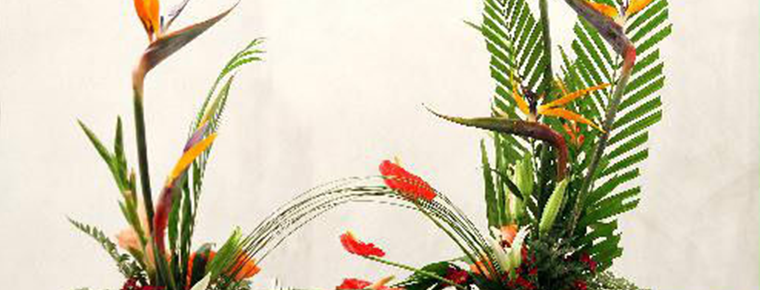
-
Haitangshan Scenic Area
Haitangshan Mountain is one of the top ten scenic spots in AAAAAA, National Forest Park, National Nature Reserve, Provincial Key Cultural Relics Protection Unit and Province.
Views: 147 Time 2019-01-13 -
Heizhugou Scenic Area
Heizhugou National Forest Park, located in Heizhugou Town, Ebian Yi Autonomous County, Leshan City, Sichuan Province, spans Haqu Township, Lewu Township and Jinyan Township..
Views: 219 Time 2019-01-13 -
Checkerboard Mesa Qipanshan Mountain
Qipanshan is located in the northeast of Shenyang City, adjacent to Fushun in the east, Hunhe in the west, Tieling in the South and Hadaling in the north. It is located .
Views: 225 Time 2019-02-07 -
Tianhetan Scenic Area
Tianhetan is located in Shibanzhen, Huaxi District, Guiyang City, Guizhou Province. It is a scenic spot with typical karst natural scenery as the main part and historical celebrities.
Views: 117 Time 2019-02-21 -
Tianmujiang Beishuicheng Hot Spring Resort
Tianmu Jiangbeishuicheng Hot Spring Resort is the third five-star resort hotel developed by Tianmu Group in Guanxian County of Shandong Province after Tianmu, Lushan Hot Spring Resort of Jiangxi Provi.
Views: 228 Time 2019-02-21 -
Iron Coal Steam Locomotive Museum
Tiaobingshan Steam Locomotive Museum, formerly known as Iron Coal Steam Locomotive Museum. National AAAA-level scenic spots and national industrial tourism demonstration sites.
Views: 188 Time 2019-02-22 -
Taoist Music
Taoist music is one of Chinese religious music. Taoist music is an indispensable part of Taoist rituals. It has the characteristics of foiling and rendering religious atmosphere, enhancing believers'y.
Views: 212 Time 2019-04-25 -
Anhui Opera
Hui Opera, one of the local operas in Anhui Province of China, originally known as "Hui Diao" and "Erhuang Diao", originated in the Ming Dynasty and was named Hui Opera after 1949..
Views: 184 Time 2019-05-04 -
Ping Ju Opera
Opera commentary is a kind of opera which is spread in the north of China. It is one of the most popular operas among the people and ranks among the five major Chinese operas. Some people once thought.
Views: 141 Time 2019-06-09 -
The Lisu Knife and Rod Festival
The Lisu Knife and Rod Festival, which is called "A Tang De" in Lisu language, means "Climbing Dao Festival". It is a traditional festival of Lisu and Yi people living in Lushui Co.
Views: 167 Time 2019-06-17 -
Peking University
Founded in 1898, Peking University was first named as Beijing Normal University Hall. It was the first national comprehensive university in China and the highest educational administrative organ at th.
Views: 244 Time 2019-08-30 -
Sugar Eggs
Laozao is a local snack, belonging to Sichuan cuisine. Laolao, a kind of wine brewing in ancient Chinese, is a Sichuan dialect, that is, boiled eggs with wine brewing. Put the mash in the pot and boil.
Views: 468 Time 2020-03-09
